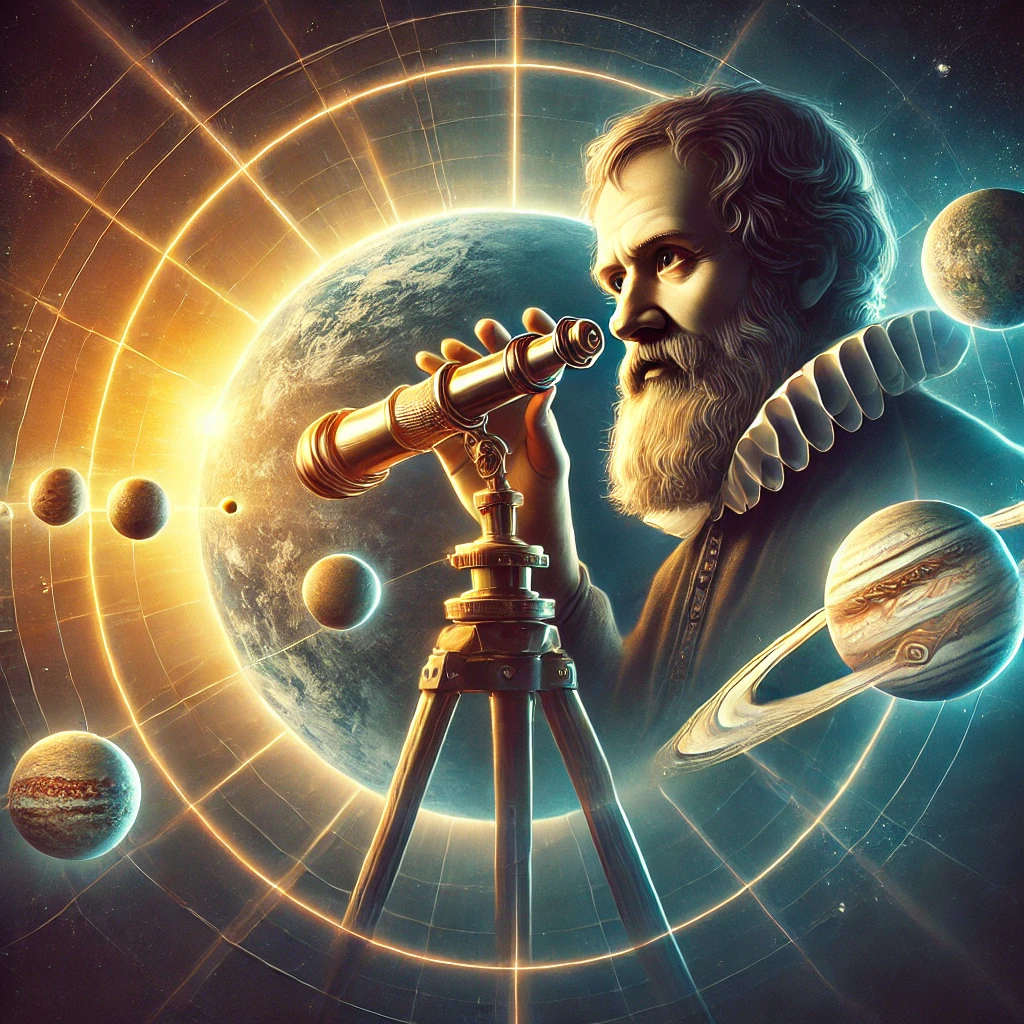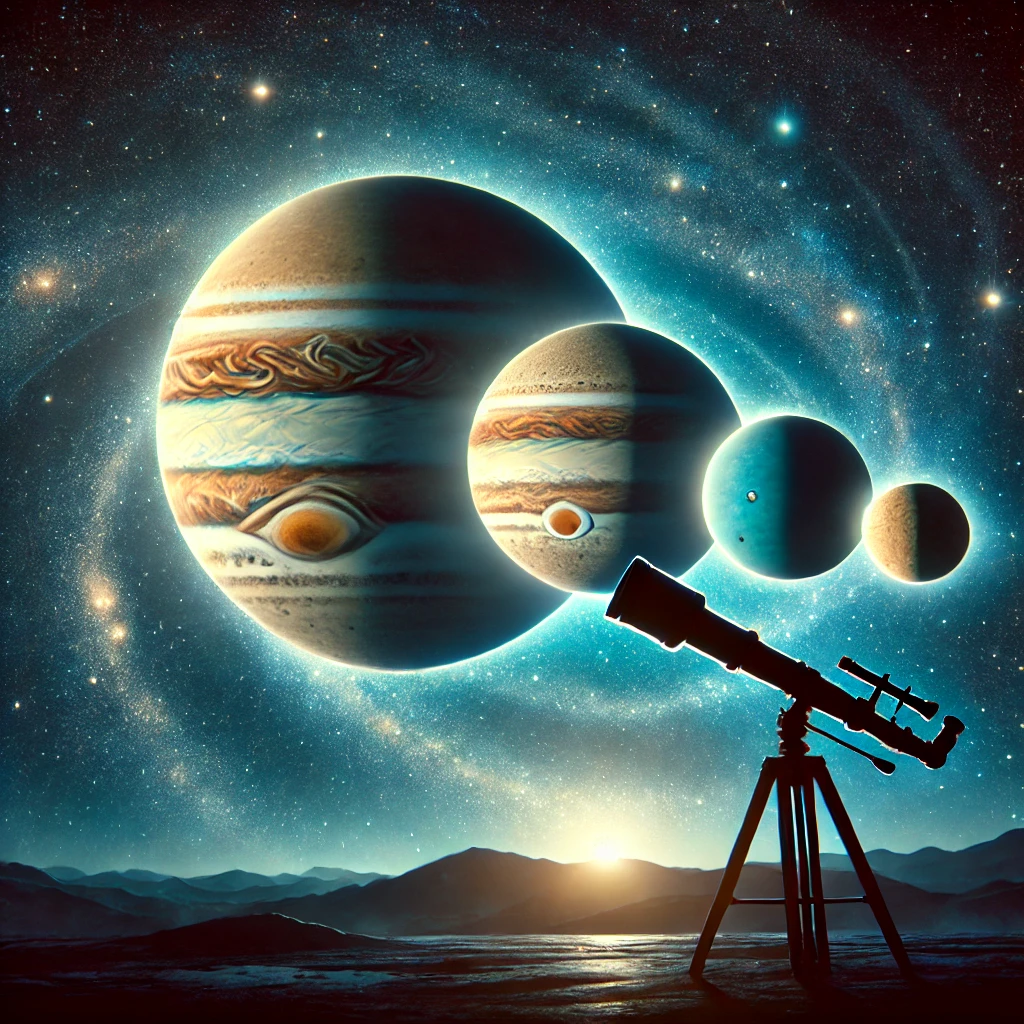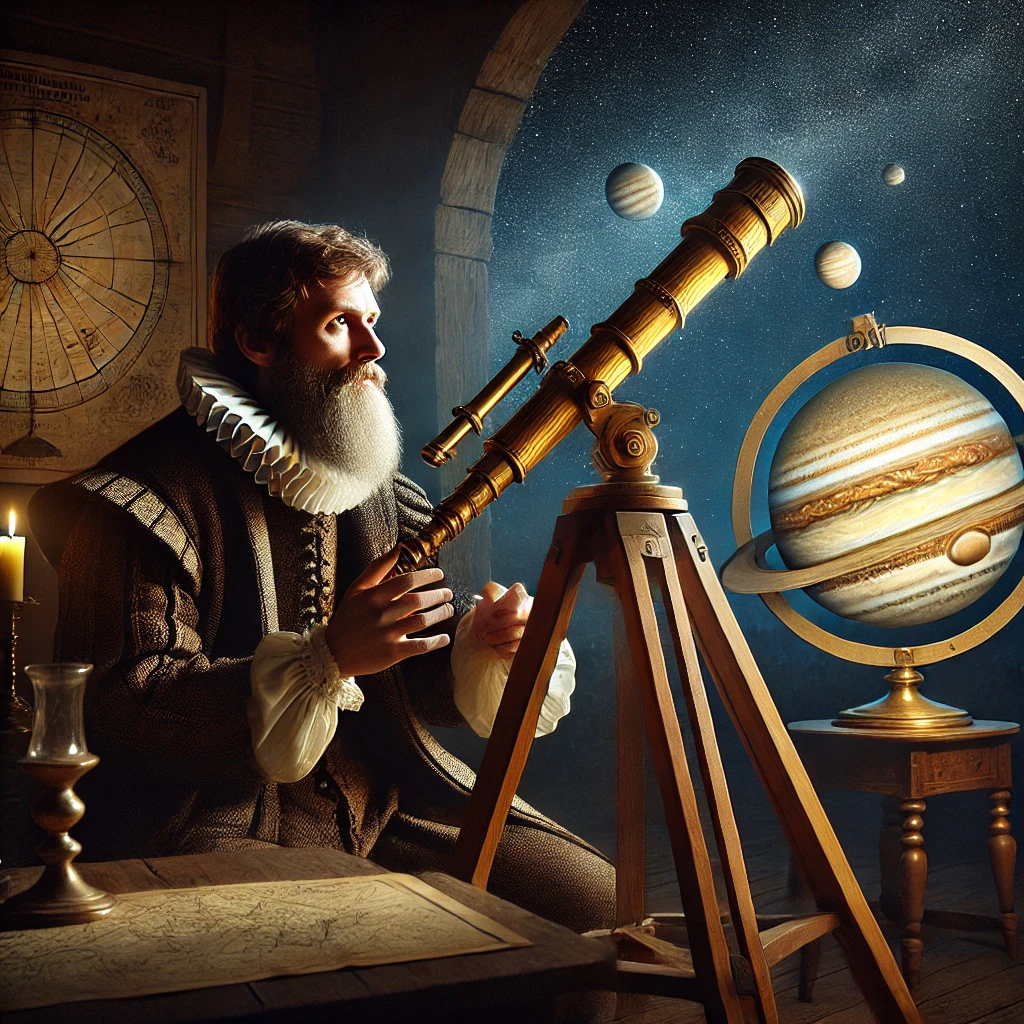On January 7th, 1610, Italian astronomer Galileo Galilei made a groundbreaking observation that forever changed our understanding of the solar system. Using his newly improved telescope, Galileo discovered the four largest moons of Jupiter—Io, Europa, Ganymede, and Callisto. These moons, now collectively known as the Galilean moons, provided some of the first evidence that not all celestial bodies orbited the Earth, challenging the geocentric model of the universe that had dominated Western thought for centuries.

A Revolutionary Discovery
Galileo’s discovery of the Galilean moons was a major milestone in the history of astronomy. Up until this point, the prevailing belief, based on the teachings of Aristotle and Ptolemy, was that Earth was the center of the universe, and all celestial bodies orbited around it. This geocentric model was deeply entrenched in both scientific thought and religious doctrine.
Galileo’s observations, however, provided compelling evidence for the heliocentric model, which proposed that the Earth and other planets orbit the Sun. As he observed Jupiter through his telescope, Galileo noticed four small, bright objects moving in a regular pattern around the planet. He initially thought they were stars, but as he continued to observe them over several nights, he realized they were not fixed in place like stars. These bodies were clearly orbiting Jupiter, challenging the long-held belief that all celestial bodies must orbit the Earth. Galileo’s discovery of the Galilean moons provided important evidence for the heliocentric model, though it would take many more years before the scientific community fully embraced it.

The Scientific and Philosophical Impact
Galileo’s discovery had profound implications for both science and philosophy. It not only confirmed that the Earth was not the center of the universe but also introduced the idea that other planets could have their own moons, much like Earth’s moon. This was a revolutionary concept, as it suggested that the universe might be far more complex than previously imagined.
In addition to its impact on the understanding of the cosmos, Galileo’s discovery directly challenged the authority of the Catholic Church, which adhered to the geocentric model. The Church had long maintained that the Earth was the center of the universe, a belief rooted in biblical interpretation. Galileo’s findings, published in his 1610 work Sidereus Nuncius (Starry Messenger), were considered controversial and led to a clash with Church authorities. Galileo’s support for the heliocentric model eventually led to his trial by the Roman Catholic Inquisition, culminating in his famous conviction for heresy in 1633.

The Legacy of Galileo’s Discovery
The Galilean moons not only provided crucial evidence for the heliocentric theory but also paved the way for future astronomical discoveries. Galileo’s use of the telescope to study celestial bodies marked the beginning of modern observational astronomy, and his approach laid the foundation for subsequent astronomers, such as Johannes Kepler and Isaac Newton. Galileo’s discoveries sparked a new era of scientific inquiry and helped usher in the Scientific Revolution.
Today, the Galilean moons are still a subject of intense study. Each moon is unique, with its own set of fascinating characteristics. Io is the most geologically active body in the solar system, while Europa is considered one of the best places to search for signs of life beyond Earth due to the possible existence of a subsurface ocean. Ganymede is the largest moon in the solar system, and Callisto has been heavily cratered, offering clues to the early history of the solar system. These moons continue to be targets for exploration by spacecraft, and they remain a symbol of how Galileo’s discoveries changed the way we view the universe.
Galileo Galilei’s discovery of the four largest moons of Jupiter on January 7th, 1610, was a pivotal moment in the history of science. By providing evidence for the heliocentric model, his findings challenged centuries of established belief and laid the groundwork for modern astronomy. Today, the Galilean moons continue to be studied, and Galileo’s legacy endures as one of the great pioneers of scientific discovery, forever altering our understanding of the universe.
